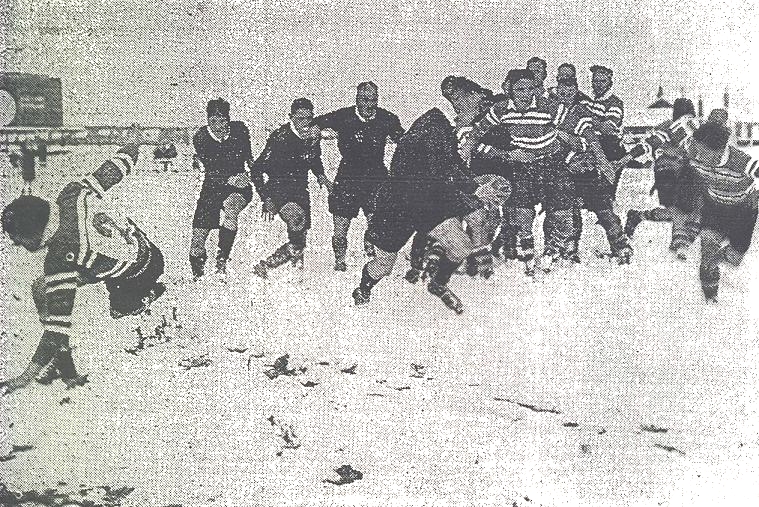
Ranfurly Shield Rugby in the Snow. Source: The Weekly News, August 1939

Ranfurly Shield Rugby in the Snow. Source: The Weekly News, August 1939
In my previous blog post I pointed out that tropical lows and cyclones don't have fronts like the lows we're used to around NZ, but rather, a core of warm air near the centre. I'd like to follow up by further contrasting tropical and mid-latitude lows, and looking a bit more closely at tropical cyclones and how they can affect our weather in New Zealand.
When tropical lows fully develop into cyclones they become the most damaging of tropical weather features. There are three main reasons for this:
Years ago, I heard the wife of a lighthouse keeper talking on the radio about the weather at Puysegur Point, on the south coast of Fiordland, where she and her husband had been stationed for a time. Six months or so before they arrived there, a fishing boat had gone down in a storm with all hands. One day, as she walked along the black stony beach, something white caught her eye. Bending over, she picked up a single human tooth.
You are probably familiar with seeing lows and highs on our weather maps around New Zealand. See, for example, previous blog posts on a mid-July northern low, How Lows and Highs move and the satellite loop in Winds Aloft.
October 2009
The snow that closed the Desert Road and Napier-Taupo Road from Sun 4th to Tue 6th October 2009 was unseasonable. It was caused by a low pressure system deepening over the area at the same time as a cold southerly flow arrived, resulting in moist air being cooled from below in a cauldron of lowering pressure. This produced an unusually heavy amount of snow over a wide area. The weather map for noon on Sunday shows the low pressure system forming over the Central North Island
A summary of the equinox
I started tramping as a teenager with the expectation of rain in the hills about two days out of three. So we were always prepared to change plans if confronted by a river in flood. Likewise, conditions on the tops could send us scurrying back below the bush line, as the wind over the ridge crests was sometimes strong enough to throw an adult carrying a heavy pack off their feet.
Earlier in the September 2009 many parts of New Zealand had frosts. This is the beginning of spring so it got me thinking about the impact that late season frosts can have on the delicate buds sprouting on trees and vines around the country.
Our weather in New Zealand is greatly modified by the shape of the land. There are many parts of the country where the air is channelled through gaps in the terrain, and I thought I would write a little about this. Especially since it relates to the thread of my earlier posts on wind.